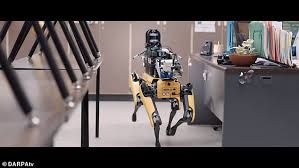
Breaking News
 Windows 10 is DEAD in 2025? -- Here's How I Run It SAFELY Forever (No Updates)
Windows 10 is DEAD in 2025? -- Here's How I Run It SAFELY Forever (No Updates)
 GENIUS ACT TRIGGERED: The Biggest BANK RUN in History is COMING – Prepare NOW
GENIUS ACT TRIGGERED: The Biggest BANK RUN in History is COMING – Prepare NOW
 European Billionaires Funneled $2 Billion into NGO Network to Fund Anti-Trump Protest Machine
European Billionaires Funneled $2 Billion into NGO Network to Fund Anti-Trump Protest Machine
 Japan Confirms Over 600,000 Citizens Killed by COVID mRNA 'Vaccines'
Japan Confirms Over 600,000 Citizens Killed by COVID mRNA 'Vaccines'
Top Tech News
 HUGE 32kWh LiFePO4 DIY Battery w/ 628Ah Cells! 90 Minute Build
HUGE 32kWh LiFePO4 DIY Battery w/ 628Ah Cells! 90 Minute Build
 What Has Bitcoin Become 17 Years After Satoshi Nakamoto Published The Whitepaper?
What Has Bitcoin Become 17 Years After Satoshi Nakamoto Published The Whitepaper?
 Japan just injected artificial blood into a human. No blood type needed. No refrigeration.
Japan just injected artificial blood into a human. No blood type needed. No refrigeration.
 The 6 Best LLM Tools To Run Models Locally
The 6 Best LLM Tools To Run Models Locally
 Testing My First Sodium-Ion Solar Battery
Testing My First Sodium-Ion Solar Battery
 A man once paralyzed from the waist down now stands on his own, not with machines or wires,...
A man once paralyzed from the waist down now stands on his own, not with machines or wires,...
 Review: Thumb-sized thermal camera turns your phone into a smart tool
Review: Thumb-sized thermal camera turns your phone into a smart tool
 Army To Bring Nuclear Microreactors To Its Bases By 2028
Army To Bring Nuclear Microreactors To Its Bases By 2028
 Nissan Says It's On Track For Solid-State Batteries That Double EV Range By 2028
Nissan Says It's On Track For Solid-State Batteries That Double EV Range By 2028
Military robots win search and rescue competition as they search for survivors in...

Scientists convened on an unfinished underground power plant in Elma, Washington to test a group of autonomous military robots in a simulated disaster scenario.
The scientists weren't taking part in an experiment but a competition sponsored by the Defense Advanced Research Projects Agency (DARPA), as part of its efforts to develop a range of autonomous robots to fill a variety of military roles.
The winning team came from NASA's Jet Propulsion Laboratory, a 60 person crew that oversaw a group of 12 robots they'd programmed through an initiative called Collaborative SubTerranean Autonomous Robots (CoSTAR).
'The goal is to develop software for our robots that lets them decide how to proceed as they face new surprises,' JPL's Ali Agha said.
'These robots are highly autonomous and for the most part make decisions without human intervention.'
CoSTAR's robots autonomously explored the underground plant, which had been designed to simulate an urban disaster environment with a carbon dioxide leak and warm air vent.

 Carbon based computers that run on iron
Carbon based computers that run on iron

